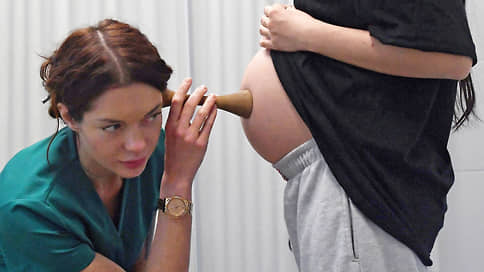The Ministry of Health approved a new form of informed voluntary consent to abortion

The Ministry of Health has expanded the list of possible complications, which are warned by women who want to terminate the pregnancy. Now it mentions cardiovascular diseases, breast cancer and adenomyosis. Patients will also talk about possible risks in drug abortion, which may require the completion of the procedure by a surgical method. The chief freelance specialist of the Ministry of Health on the reproductive health of women explained that the list of complications is brought into line with the procedure for providing medical care in the profile “Obstetrics and Gynecology” and will help to inform patients about the medical consequences of abortion in more detail.
The Ministry of Health approved by its order a new form of informed voluntary consent (IDS), which women sign before an abortion. It replaces the previous similar document (Order of the Ministry of Health No. 216n 2016), which operated for almost ten years. The new order comes into force on September 1, 2025. The publication was the first to pay attention to the document « Majesty ».
Most of the norms migrated from the old order. By signing the IDS, the woman confirms that she was given time (seven days or 48 hours, depending on the deadline) to think and make the final decision, and also talked about the absence of medical contraindications for bearing a child and demonstrated the fetal heartbeat. Doctors are also obliged to talk about the possible consequences of artificial termination of pregnancy, including infertility, chronic inflammatory processes of the uterus, various complications when bearing subsequent pregnancy, mental disorders, etc.
Now adenomyosis has been added to such complications (a type of endometriosis-a disease in which the uterine mucosa grows outside the organ cavity), cardiovascular diseases and breast cancer.
It is clarified that with drug abortion, complications may occur that will require the completion of the procedure in a surgical way (since the remains of the fetal egg, bleeding and progressive pregnancy are possible). The procedure of drug abortion itself is first described in the IDS: a manipulation causing « death and subsequent expulsion from the uterine cavity of the embryo (fetus). »
Natalia Dolgushina, chief freelance specialist in the Ministry of Health of Women’s Reproductive Health, explained to Kommersant that the new form of the IDS is brought into line with the procedure for providing medical care in the profile “Obstetrics and gynecology” and clinical recommendations. The connection of each of the listed complications with abortion has been proven. “The inclusion of these data in the form of the IDS is aimed at providing patients with the most complete and objective information about possible risks and consequences of abortion. This will allow women to make conscious decisions on reproductive health, based on scientifically sound data and taking into account the possible consequences for the body. ”
The listed complications can really arise, but with different frequency, says a reproductologist, obstetrician-gynecologist Victoria Shustova.
The most common complications after abortion, it indicates, these are inflammatory diseases of the pelvic organs and possible disorders of the menstrual cycle. The risk of infertility and chronic inflammatory processes, according to her, is also, but it is relatively small. “The inclusion of states such as adenomyosis, cardiovascular diseases and breast cancer raises certain questions,” says Ms. Shustova. “Direct communication between the abortion and the development of these diseases remain ambiguous. For example, the World Health Organization does not consider abortion a proven risk factor for breast cancer. ” It confirms that with a drug abortion, there are really cases when the procedure is incomplete – then surgical intervention is required: “This is a standard risk that the patient was reported before.”
The head doctor of the clinic “To Medicine”, the obstetrician-gynecologist Alexei Chernikov “is pleasantly surprised” with the inclusion of cardiovascular diseases and breast cancer in the list of possible complications of abortion. “We began to better understand the pathogenetic ties in the occurrence of diseases that depend on the hormones of the reproductive system (and termination of pregnancy), and we want to lead the regulatory framework to the general standards and the only informing of patients about possible consequences,” he says. “Because one of the doctors will warn about the possibility of progression of pregnancy, and the other will forget that it may mislead.” Only “weighing all risks” will make it possible to make the right decision and ideally preserve every pregnancy, and “protect the doctors from claims in the future in case of complications,” said Alexei Chernikov.
The number of abortions in Russia is steadily reduced. In 2023, their number amounted to 467.6 thousand, which is more than half as lower than the level of 2013 (more than 1 million). According to experts, about 300 thousand abortions per year are made without medical indications.








